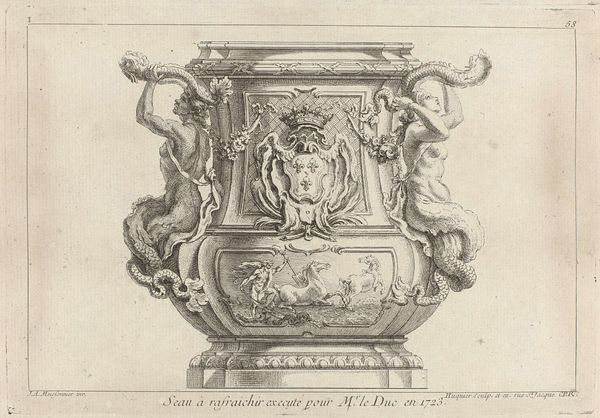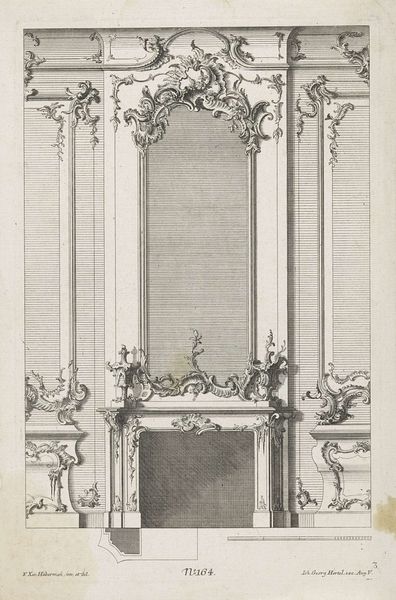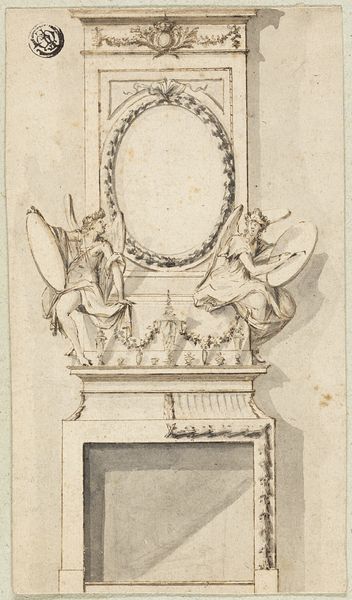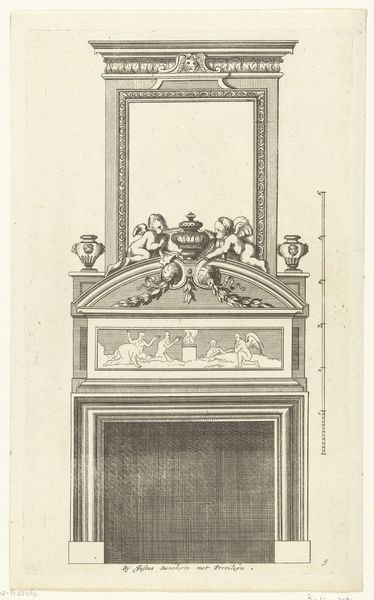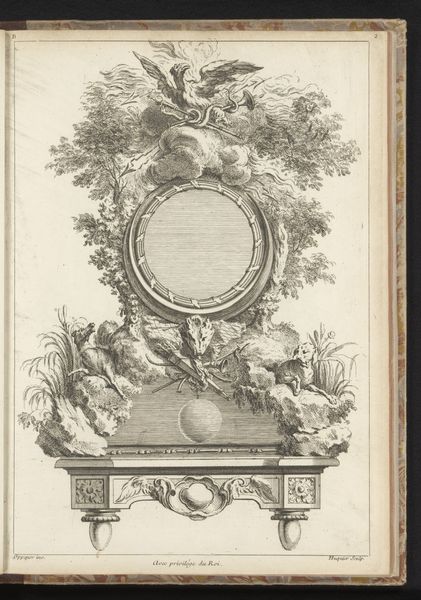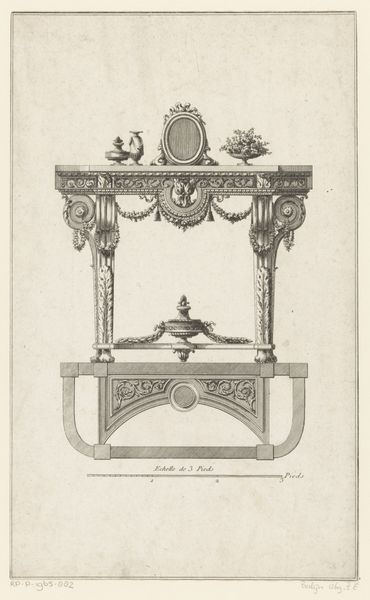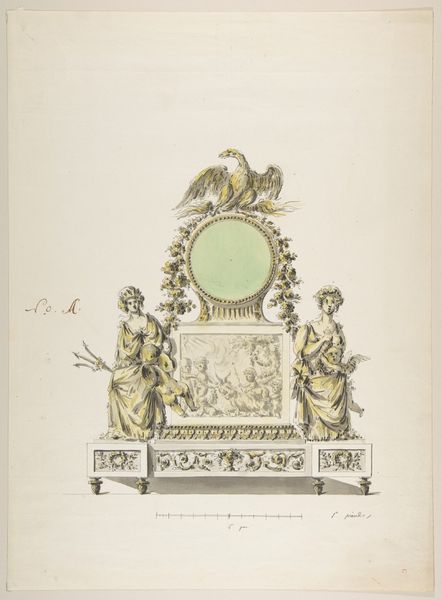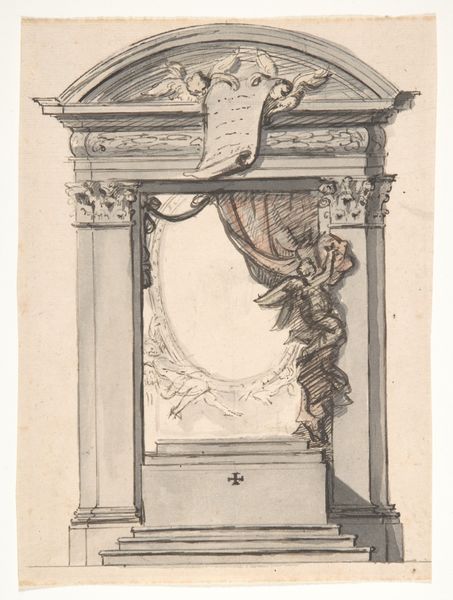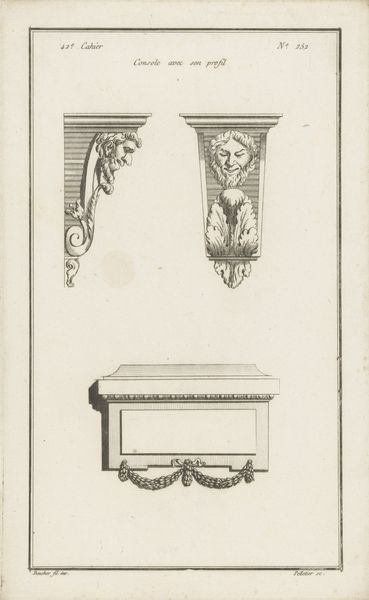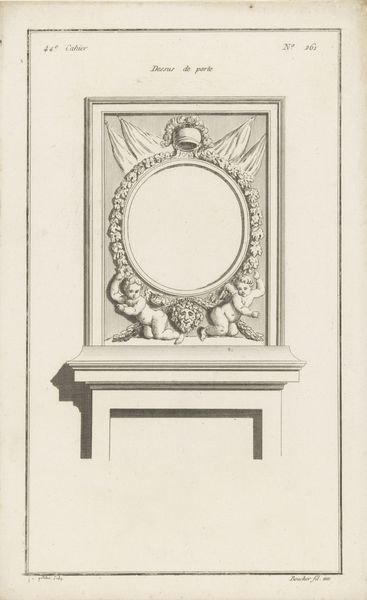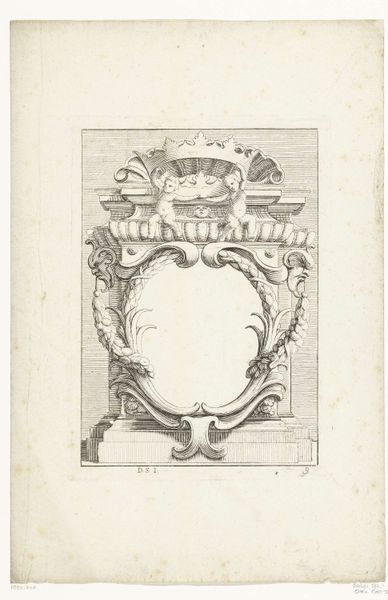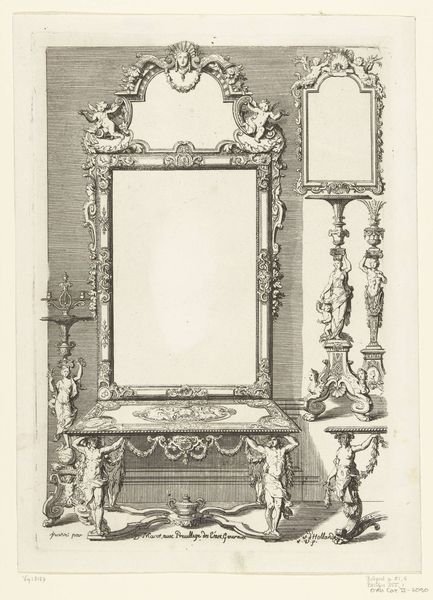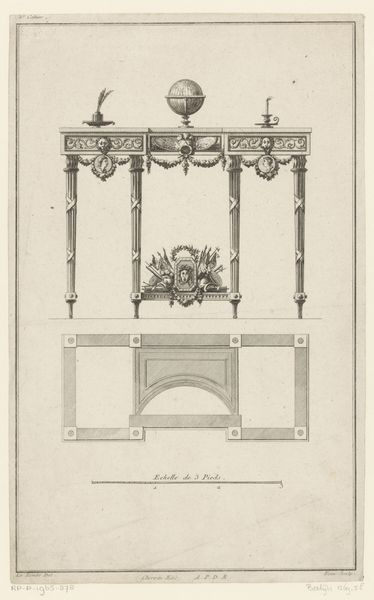
drawing, print, paper, pencil, architecture
#
architectural sketch
#
drawing
#
neoclacissism
# print
#
paper
#
pencil
#
architecture
Dimensions: 13 5/16 x 9 1/2 in. (33.8 x 24.1 cm)
Copyright: Public Domain
Editor: This is a design for a clock, created anonymously between 1775 and 1799, using pencil, paper, and print. It's at the Met in New York. The piece feels so opulent, with all the details – cherubs, sphinxes, ornate floral designs. I'm curious, what draws your attention in this particular design? Curator: Well, beyond the Neoclassical aesthetics, I'm particularly interested in the material implications and production processes this design suggests. Think about the clock itself – what materials would be required? Who would be the labor force crafting such an elaborate object, from mining the metals to carving the ornamentation? Editor: So, it's not just about the aesthetics, but also about the means to bring this design into reality? Curator: Exactly. Consider the economic and social stratification reflected here. This wasn't a design for mass production; it speaks to a very specific consumer base. How would the artisan acquire the specialized skills to bring it to fruition, and who benefits from this process? Where did all these materials originate? Editor: It's like thinking about the entire journey of the object, from raw materials to the final product in someone's home. Curator: Precisely! Even the drawing itself—paper, pencil, printing—required specific resources and skills. By focusing on these material aspects, we can better understand the culture and context from which it emerged. This blurs the line between "high art" and the applied arts and crafts. Editor: It really makes you appreciate all the unseen hands that would contribute to a piece like this. It's definitely given me a new perspective. Curator: And hopefully, encourages us to be more mindful of the labor and material inputs behind everything we consume, even art.
Comments
No comments
Be the first to comment and join the conversation on the ultimate creative platform.
